
LED ceiling lights and LED ceiling lamps

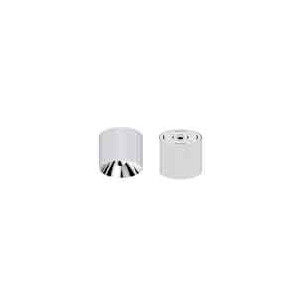











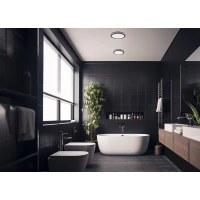
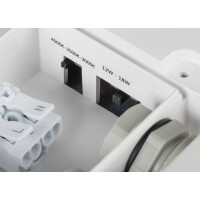












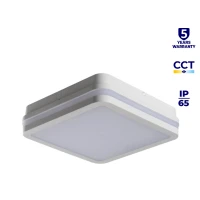

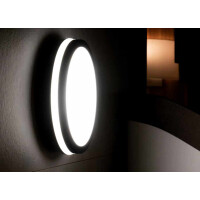
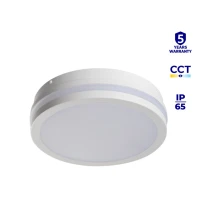


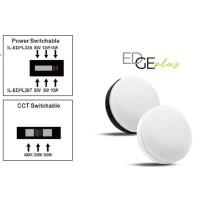





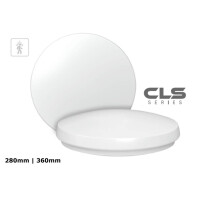
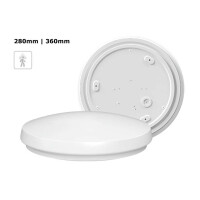






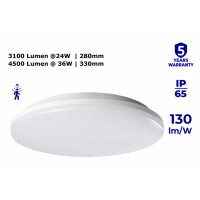
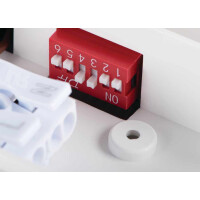
































The selection of LED ceiling lights is huge and they are available in many different designs. However, choosing a ceiling light is not that difficult if you can answer a few questions in advance. This allows you to quickly narrow down your selection and find the ideal product for every requirement. We at Cologne-LED.de are happy to help you with your selection.
What is the intended use of the LED ceiling light?
Ceiling lights can be found everywhere in buildings and also outdoors. In commercial areas, ceiling lights are mostly used for general lighting. LED ceiling lights are used in:
- Offices and workplaces as large LED ceiling lights
- General lighting in hallways and corridors
- Stairwell lighting
- Entrance areas and covered outdoor areas
- Examination lights in doctors' surgeries
- Workshop lighting
- Basic lighting in retail outlets
- Damp rooms such as toilets and bathrooms
- Living areas
- Ceiling lights with motion detectors
What shape and colour should the LED ceiling lights be?
Ceiling lamps are preferably sold as round or square ceiling lights. These range from diameters of 80 mm to large round LED ceiling lights with a diameter of 80 cm. Square ceiling lamps are usually installed as LED surface-mounted LED panel ceiling lights with frames. They are quite inexpensive and easy to install.
The majority of lamps are sold as white ceiling lights. Black ceiling lights are now becoming increasingly popular, while silver ceiling lamps have been significantly less in demand in recent years.
How can I recognise the quality of an LED ceiling lamp?
The most important criteria for high product quality are
- a long specified service life of around 50,000 hours
- a high number of switching cycles of the built-in power supply units
- a long manufacturer's warranty of, for example, 5 years
- a non-yellowing plastic for the light guide plate
- and the quality of the built-in power supply units.
All these features significantly increase product quality. Higher product quality quickly pays off, especially with long operating times of many hours per day. This is often reflected in a slightly higher product price.
Are LED ceiling lights dimmable?
Standard LED ceiling lights are usually not dimmable. Dimming is more common with large LED ceiling lights. In these cases, the power supplies are installed separately and can be offered as dimmable LED ceiling lights, for example. The most popular types of dimming are phase cut dimming or dimming via KNX-Dali bus systems.
All modern dimming types such as phase cut-off dimming, Triac, DALI dimming are available. The DALI dimmable ceiling luminaire in particular is now very often requested in connection with KNX home automation systems.
Modern home automation systems via the DALI bus such as those from MDT® , Gira®, Busch-Jäger®, Merten® or Hager® allow central control of the LED surface-mounted spotlights in the home via a central system or Dali Gateway. We offer the DALI dimmable ceiling light in many different variations and types and can also make statements about compatibility with existing or planned dimmers.
What requirements should a ceiling lamp for offices meet?
A LED office ceiling lamp should
- be sufficiently bright to meet the high requirements of computer workstations (500 lux required)
- have low glare values of UGR<19 to avoid reflections on screens or surfaces
- Possibly no-flicker power supplies for high ergonomics and no 50 Hz flickering for comfortable working
- High efficiency to guarantee the lowest possible power consumption during long operating times
- Long warranty periods of 5 years if possible
Are there any sustainable LED ceiling lights in the range?
LED ceiling lights are often mass-produced. Light bulbs or light strips usually cannot be replaced. In larger models, the power supply can be replaced. This is very often the cause of failures. In LED panel ceiling lights, the power supply can be replaced by a qualified electrician.
We will soon be introducing a new series of sustainable LED ceiling lights. These are made from recycled plastic and are printed using a 3D printer. The ceiling light housing, LED module and power supply unit can be replaced separately. This means that all three components can be replaced individually.
Flexible and adjustable LED ceiling lights
Flexible LED ceiling lights are now very popular. Depending on the light, the following values can be adjusted
- Adjustable wattage. Customers often find LED ceiling lights too bright. Adjustable power helps to reduce power consumption
- Adjustable light colour. The same luminaire can be used in different areas. For general lighting in a more neutral white with 4000K or in a staff room with a warmer white tone with 3000 Kelvin warm white.
- Ceiling lamps with motion detectors for indoor use only switch on the light when necessary, when movement is detected by the sensor. This saves additional electricity in areas that are not regularly frequented. A ceiling lamp with a motion detector saves a lot of electricity because it is not constantly lit. Depending on the model, a lamp with a motion detector can also be operated as a wall lamp or ceiling lamp with a motion detector with a basic brightness and only switches on full brightness when needed.
Which LED ceiling lights should be used for ‘covered’ outdoor areas?
LED ceiling lights for outdoor use in covered areas that are somewhat protected from the weather should have an IP protection rating of at least IP44. A higher protection rating of IP54 is also useful.
Areas that are exposed to direct weather conditions such as rain and sunlight should have a protection class of at least IP65. A high protection class also helps to prevent flies and other insects from entering.
Which light colour/colour temperature should be chosen for LED ceiling lights and LED ceiling lamps?
The light colour and colour rendering index (CRI) are important technical features. Ceiling lamps are available in different colour temperatures, typically in the range between 2700 - 3000K (warm white), 4000K neutral white or 6000K (cool white / daylight white).
Warm white light in the range of 2700-3000K is particularly suitable for rooms and spaces where a cosy atmosphere is desired. These include
- hotel foyers
- staff break rooms
- doctor's waiting rooms
- wellness centres and spas, bars or cafés
- yoga rooms or physiotherapy rooms
Warm white light is usually used in most of these places.
Neutral white light is between approx. 4000K and 4500 Kelvin. It is a widely used working light. Neutral white light from LED panels is often used in:
- Offices
- Corridors and reception halls
- Doctor's surgeries, especially general practitioners
- Schools
- Group rooms in daycare centres
- Meeting rooms
- Restaurant kitchens
- Hairdressing salons
- Studying rooms
Daylight white or cool white light is often used in rooms where concentrated work is carried out or colour differentiation is important
- Doctors' treatment rooms, especially in dental practices
- Laboratories
- Quality control
- Detailed precision work
- Printing, working with colours and photography
- Cosmetics shops and beauty salons
- Nail salons
- Museums and galleries
Cool white light ranges from approximately 5000K to 6500 Kelvin and is often referred to as daylight white.
Can you advise us on choosing a suitable ceiling lamp and ceiling light?
Yes, of course, we at Cologne-led.de are here for you and will be happy to advise you on choosing a suitable LED ceiling lamp, either by telephone or by email at team(at)cologne-led.de.
We have been serving our customers for many years and have a correspondingly long experience in the field of LEDs for commercial use.
Translated with DeepL.com (free version)



